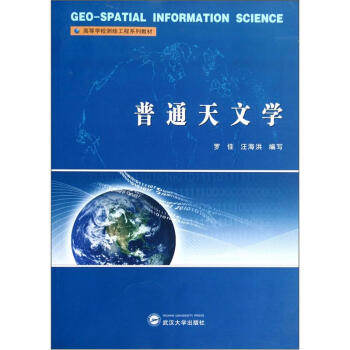![模糊集合论及其应用(第4版) [Fuzzy Set Theory and Its Applications Fourth Edition]](https://pic.qciss.net/10914280/f4168379-4b8d-465b-b455-f2ec49e7d237.jpg)

具体描述
内容简介
Since its inception 20 years ago, the theory of fuzzy sets has advanced in a variety of ways and in many disciplines. Applications of this theory can be found, for example, in artificial intelligence, computer science, control engineering, deci-sion theory, expert systems, logic, management science, operations research,pattern recognition, and robotics. Theoretical advances have been made in many directions. In fact it is extremely difficult for a newcomer to the field or for some-body who wants to apply fuzzy set theory to his problems to recognize properly the present "state of the art." Therefore, many applications use fuzzy set theory on a much more elementary level than appropriate and necessary. On the other hand, theoretical publications are already so specialized and assume such a back-ground in fuzzy set theory that they are hard to understand. The more than 4,000 publications that exist in the field are widely scattered over many areas and in many journals. Existing books are edited volumes containing specialized contri-butions or monographs that focus only on specific areas of fuzzy sets, such as pattern recognition [Bezdek 1981], switching functions [Kandel and Lee 1979],or decision making [Kickert 1978]. Even the excellent survey book by Dubois and Prade [1980a] is primarly intended as a research compendium for insiders rather than an introduction to fuzzy set theory or a textbook. This lack of a com-prehensive and modern text is particularly recognized by newcomers to the field and bv those who want to teach fuzzy set theory and its applications.内页插图
目录
List of FiguresList of Tables
Foreword
Preface
Preface to the Fourth Edition
Introduction to Fuzzy Sets
Crispness, Vagueness, Fuzziness, Uncertainty
Fuzzy Set Theory
Fuzzy Mathematics
Fuzzy Sets-Basic Definitions
Basic Definitions
Basic Set-Theoretic Operations for Fuzzy Sets
Extensions
Types of Fuzzy Sets
Further Operations on Fuzzy Sets
Algebraic Operations
Set-Theoretic Operations
Criteria for Selecting Appropriate Aggregation Operators
Fuzzy Measures and Measures of Fuzziness
Fuzzy Measures
Measures of Fuzziness
The Extension Principle and Applications
The Extension Principle
Operations for Type 2 Fuzzy Sets
Algebraic Operations with Fuzzy Numbers
Special Extended Operations
Extended Operations for LR-Representation of Fuzzy Sets
Fuzzy Relations and Fuzzy Graphs
Fuzzy Relations on Sets and Fuzzy Sets
Compositions of Fuzzy Relations
Properties of the Min-Max Composition
Fuzzy Graphs
Special Fuzzy Relations
Fuzzy Analysis
Fuzzy Functions on Fuzzy Sets
Extrema of Fuzzy Functions
Integration of Fuzzy Functions
Integration of a Fuzzy Function over a Crisp Interval
Integration of a (Crisp) Real-Valued Function over a Fuzzy
Interval
Fuzzy Differentiation
Uncertainty Modeling
Application-oriented Modeling of Uncertainty
Causes of Uncertainty
Type of Available Information
Uncertainty Methods
Uncertainty Theories as Transformers of Information
Matching Uncertainty Theory and Uncertain Phenomena
Possibility Theory
Fuzzy Sets and Possibility Distributions
Possibility and Necessity Measures
Probability of Fuzzy Events
Probability of a Fuzzy Event as a Scalar
Probability of a Fuzzy Event as a Fuzzy Set
Possibility vs. Probability
Applications of Fuzzy Set Theory
Fuzzy Logic and Approximate Reasoning
Linguistic Variables
Fuzzy Logic
Classical Logics Revisited
Linguistic Truth "rabies
Approximate and Plausible Reasoning
Fuzzy Languages
Support Logic Programming and Fril
Introduction
Fril Rules
Inference Methods in Fril
FrU Inference for a Single Rule
Multiple Rule Case
Interval and Point Semantic Unification
Least Prejudiced Distribution and Learning
Applications of Fril
Fuzzy Sets and Expert Systems
Fuzzy Control
Fuzzy Data Bases and Queries
Fuzzy Data Analysis
Decision Making In Fuzzy Environments
Applications of Fuzzy Sets in Engineering and Management
Empirical Research in Fuzzy Set Theory
Future Perspectives
精彩书摘
situation and is meant to be a mapping of a problem, a system, or a process. In contrast to a scientific theory, containing scientific laws as hypotheses, a model normally does not assert invariance with respect to time and space but requires modifications whenever the specific context for which the model was constructed changes.In the following, we will concentrate on models rather than on theories. Real-izing that there is quite a variety of types of models, we do not think that it is important and necessary for our purposes to distinguish models by their language (mathematics or logic is considered to be a modeling language), by area, by problem type, by size, and so on. One classification, however, seems to be impor-tant: the distinction of models by their character. Scientific theories were already divided into formal theories and factual theories.
……
前言/序言
用户评价
作为一名对人工智能的理论基础充满好奇的学习者,《模糊集合论及其应用(第4版)》这本书无疑是我近期最引以为傲的“阅读战利品”。它不仅仅是一本教材,更像是一扇通往更深层次理解世界的大门。从最初接触模糊集合的“隶属度”概念,到后面理解模糊逻辑的推理规则,再到最终掌握模糊系统的构建和应用,整个过程都充满了惊喜和顿悟。 本书的叙述方式非常考究,作者能够以一种非常平缓且系统的方式,将复杂的数学理论娓娓道来。即使是对于数学背景不算特别深厚的读者,也能在作者的引导下,逐步领会模糊集合论的核心思想。书中对各种模糊集合运算的详细解释,以及对不同类型模糊逻辑的比较分析,都极大地加深了我对这个领域的理解。 让我尤其受益的是书中关于模糊系统应用的部分。我一直对如何让机器更好地理解和处理人类的语言和判断感到着迷,而模糊集合论恰恰提供了解决这一问题的关键。书中关于模糊推理在自然语言处理、专家系统以及智能控制等领域的应用案例,让我看到了理论如何转化为实际的智能系统。例如,书中对模糊模式识别的讲解,为我理解图像识别和语音识别等技术提供了理论基础。 这本书在理论深度上毫不妥协,同时也注重实际应用的可操作性。作者并没有仅仅停留在理论层面,而是详细介绍了如何设计和实现模糊控制器、模糊推理系统等。这对于想要将所学知识付诸实践的读者来说,是非常宝贵的。 总而言之,《模糊集合论及其应用(第4版)》是一本极具价值的著作。它不仅帮助我构建了扎实的模糊集合论理论基础,更激发了我对人工智能领域更深层次的探索欲望。强烈推荐给任何对数学、人工智能、以及如何用更灵活的方式处理不确定性信息感兴趣的朋友。
评分作为一名长期在人工智能领域探索的研究者,我一直在寻找能够为我提供坚实理论基础和前沿视角的前沿著作。当我初次翻阅《模糊集合论及其应用(第4版)》时,便被其宏大的理论框架和广泛的应用场景深深吸引。这本书不仅仅是枯燥的数学公式堆砌,它更像是一座精心搭建的知识殿堂,带领读者从模糊集合论的基本概念出发,逐步深入到其丰富的理论体系。作者以一种循序渐进的方式,将抽象的数学概念转化为易于理解的语言,并辅以大量的图示和实例,使得即便是初次接触模糊集合论的读者,也能快速掌握其精髓。 这本书的魅力在于它提供了解决现实世界复杂问题的全新思维模式。传统的二元逻辑在面对现实世界中模棱两可、不确定和模糊的信息时,常常显得力不从心。而模糊集合论则提供了一种优雅的解决方案,它能够更好地捕捉和处理这些不确定性。在书中,我看到了如何利用模糊逻辑进行决策分析、模式识别、控制系统设计,甚至是在专家系统和人工智能领域中的应用。每一个章节都像是一次深入的实践演练,让我能够将理论知识转化为实际技能,从而更好地应对工作中遇到的挑战。 尤其令我印象深刻的是,这本书在探讨模糊集合论的理论基础时,并没有止步于经典的模糊集,而是拓展到了模糊度量空间、模糊拓扑空间等更高级的概念。这种理论的深度和广度,对于希望在模糊数学领域进行深入研究的读者来说,无疑是一笔宝贵的财富。它不仅提供了严谨的数学证明,还巧妙地连接了理论与实际应用,让读者在享受数学之美的同时,也能体会到其强大的实用价值。 对于正在攻读相关专业博士学位的我来说,能够拥有一本如此全面且更新及时的教材是极其幸运的。本书在对经典模糊集合论理论进行系统梳理的基础上,还融入了近年来模糊数学领域的最新研究成果和发展动态。例如,书中对于模糊粗糙集、模糊小波变换以及模糊神经网络等前沿方向的介绍,为我的论文研究提供了重要的理论支撑和思路启发。 这本书的排版和设计也相当出色。清晰的章节划分、合理的段落结构、以及对关键概念的重点突出,都使得阅读体验非常流畅。书中大量的参考文献也为进一步的学术探索提供了便捷的入口。总而言之,《模糊集合论及其应用(第4版)》是一本集理论性、系统性、实用性和前沿性于一体的优秀学术著作,强烈推荐给所有对模糊数学及其应用感兴趣的读者。
评分坦白讲,我当初选择阅读《模糊集合论及其应用(第4版)》,更多的是一种职业上的“不得不为之”。我身处一个需要处理大量复杂、不确定信息的行业,传统的建模方法常常显得捉襟见肘,效率低下。我曾听说过模糊集合论的大名,但一直对其具体内容和实际效用了解不多。翻开这本书,我才真正领略到它的强大之处。 作者在书中构建了一个清晰且逻辑严谨的知识体系。从最基本的模糊集概念,到各种运算,再到更为复杂的模糊推理和模糊系统设计,每一个环节都介绍得鞭辟入里。我尤其欣赏作者在处理数学概念时,能够结合生动的比喻和直观的图示,让那些原本可能让人望而生畏的数学公式变得易于理解。例如,书中关于隶属度函数选取方法的讨论,就提供了多种不同的视角,让我能够根据具体问题选择最合适的模型。 这本书给我最大的启发,在于它提供了一种全新的思维方式。它让我意识到,很多现实世界中的问题,并不是非此即彼的简单二元选择,而是存在着各种程度的“模糊”。模糊集合论恰恰能够很好地捕捉和量化这种“模糊性”,从而构建出更贴近现实的模型。我开始思考,如何在我的日常工作中,借鉴这种思想来优化我们的数据分析和决策流程。 书中列举的应用案例,让我看到了模糊集合论的巨大潜力。从工业自动化到医疗诊断,再到金融风险评估,这些案例都生动地展示了模糊集合论如何在实际场景中发挥作用,解决那些传统方法难以解决的问题。例如,书中关于模糊专家系统的介绍,就让我看到了如何构建能够模拟人类专家判断能力的系统。 总而言之,《模糊集合论及其应用(第4版)》不仅是一本严谨的学术著作,更是一本极具启发性的思维工具书。它打破了我原有的认知框架,让我能够以更开放、更灵活的视角去审视和解决复杂问题。我非常庆幸能够拥有这本书,它将成为我职业生涯中不可或缺的参考。
评分这本书就像一本藏宝图,里面描绘着一个我之前从未探索过的奇妙世界。我一直觉得,我们对世界的认知,往往不是非黑即白的,很多时候都处于一种“有点像”或者“不是很像”的中间地带。传统的数学工具,在描述这些“中间状态”时,总显得有些笨拙。然而,《模糊集合论及其应用(第4版)》却为我打开了一扇新视界的大门。 书中的概念,例如“隶属度”这个词,一开始听起来有点拗口,但随着阅读的深入,我逐渐体会到它的精妙之处。它不是简单地将事物归为“是”或“否”,而是赋予了一种程度上的量化,让我们可以更细致地描述事物的“属于”程度。我开始想象,在现实生活中,这样的概念可以解决多少模糊的问题!比如,我们如何评估一个人对某个政策的“支持程度”,或者一个物体距离某个区域的“接近程度”。这本书提供了数学上的严谨框架来处理这些日常生活中普遍存在的模糊性。 我特别喜欢书中对各个应用领域的详细阐述。从工程控制到信息处理,再到决策科学,模糊集合论的触角无处不在。书中列举的案例,让我能够看到这些抽象的数学理论如何转化为解决实际问题的强大工具。例如,书中关于模糊逻辑控制器在洗衣机、空调等家电中的应用,让我恍然大悟,原来我们每天使用的许多智能设备,都蕴含着如此巧妙的模糊数学思想。 这本书的行文风格也很有特色,它不像一些纯理论书籍那样枯燥乏味,而是充满了启发性和引导性。作者似乎总能预见到读者可能会产生的疑问,并在恰当的时机给出清晰的解答。这种“知你者莫如书”的感觉,让我在阅读过程中倍感轻松和愉悦。 总的来说,这本书让我对“不确定”和“模糊”有了全新的认识。它不仅仅是一本关于数学的书,更是一本关于如何更理性、更全面地理解和处理我们周围复杂世界的书。对于任何想要拓展思维边界,学习新颖分析工具的读者来说,这本书都是一个绝佳的选择。
评分拿到《模糊集合论及其应用(第4版)》这本书,最直观的感受就是其内容的广度和深度。我之前对模糊集合论的了解仅限于一些零散的概念,以为它只是处理不确定性的一种方法。但这本书彻底颠覆了我的认知。它从最基础的模糊集定义开始,层层递进,将模糊逻辑、模糊关系、模糊推理、模糊测度等一系列核心理论娓娓道来。 这本书的严谨性令人赞叹。作者在介绍每个理论概念时,都辅以清晰的数学定义和详尽的推导过程,这对于想要深入理解其数学原理的读者来说至关重要。但同时,作者又不像某些理论书籍那样只关注抽象的数学形式,而是非常注重理论与实际应用的结合。大量的应用案例,涵盖了诸如模式识别、故障诊断、模糊控制、模糊聚类等多个领域,让读者能够直观地感受到模糊集合论在解决现实问题中的强大威力。 尤其让我惊喜的是,书中对模糊集合论的最新发展进行了系统性的梳理。作者不仅介绍了经典理论,还关注了诸如区间值模糊集、直觉模糊集、模糊粗糙集等更具前沿性的研究方向。这对于希望站在学科前沿,了解最新研究动态的读者来说,无疑是极大的帮助。 我个人尤其欣赏书中对模糊决策分析部分的阐述。在现实的商业决策中,我们常常面临信息不全、标准模糊的情况。《模糊集合论及其应用(第4版)》提供了一套系统的方法论,能够帮助我们量化和处理这些不确定性,从而做出更优的决策。书中关于模糊多准则决策的分析,为我处理复杂的投资评估问题提供了重要的理论依据。 这本书的结构也非常合理,每个章节都围绕一个核心主题展开,逻辑清晰,过渡自然。即使是初次接触模糊集合论的读者,也能循序渐进地掌握其核心思想。我强烈推荐这本书给所有在工程、计算机科学、管理科学等领域工作的专业人士,它将为你打开认识和解决问题的新视角。
评分最后,人们对模糊性的认识往往同随机性混淆起来,其实它们之间有着根本的区别。随机性是其本身具有明确的含义,只是由于发生的条件不充分,而使得在条件与事件之间不能出现确定的因果关系,从而事件的出现与否表现出一种不确定性。而事物的模糊性是指我们要处理的事物的概念本身就是模糊的,即一个对象是否符合这个概念难以确定,也就是由于概念外延模糊而带来的不确定性。
评分需要注意的几点:首先,人们在认识模糊性时,是允许有主观性的,也就是说每个人对模糊事物的界限不完全一样,承认一定的主观性是认识模糊性的一个特点。例如,我们让100个人说出“年轻人”的年龄范围,那么我们将得到100个不同的答案。尽管如此,当我们用模糊统计的方法进行分析时,年轻人的年龄界限分布又具有一定的规律性;
评分影印版的图片不太清晰,文字清楚。这个价格可以理解
评分不确定性数学
评分开学买的教材,趁京东打折时买的,很划算
评分开学买的教材,趁京东打折时买的,很划算
评分开学买的教材,趁京东打折时买的,很划算
评分东西不错,希望一直好用。
评分需要注意的几点:首先,人们在认识模糊性时,是允许有主观性的,也就是说每个人对模糊事物的界限不完全一样,承认一定的主观性是认识模糊性的一个特点。例如,我们让100个人说出“年轻人”的年龄范围,那么我们将得到100个不同的答案。尽管如此,当我们用模糊统计的方法进行分析时,年轻人的年龄界限分布又具有一定的规律性;
相关图书
本站所有内容均为互联网搜索引擎提供的公开搜索信息,本站不存储任何数据与内容,任何内容与数据均与本站无关,如有需要请联系相关搜索引擎包括但不限于百度,google,bing,sogou 等
© 2025 book.cndgn.com All Rights Reserved. 新城书站 版权所有



![流体动力稳定性(第2版) [Hydrodynamic Stabilty] pdf epub mobi 电子书 下载](https://pic.qciss.net/10914325/rBEGF1DK7x0IAAAAAACR6JXFoB4AAA92ACLziUAAJIA326.jpg)




![中外物理学精品书系·引进系列(5)·现代多粒子物理:原子气体、纳米结构和量子液体(第2版)(影印版) [Modern Many-Particle Physics:Atomic Gases,Nanostructures and Quantum Liquids 2nd Edition] pdf epub mobi 电子书 下载](https://pic.qciss.net/11163541/rBEHZlD3gCQIAAAAAAe3ocAEJ6QAADqCQBFwiEAB7e5724.jpg)



![抽象代数讲义(第3卷)(英文) [Lectures in Abstract Algebra 3] pdf epub mobi 电子书 下载](https://pic.qciss.net/11308633/rBEhWVIm51EIAAAAAALb5qloKPQAACyDgOSJBIAAtv-533.jpg)

![德热纳:高分子物理学中的标度概念 [Scaling Concepts in Polymer Physics] pdf epub mobi 电子书 下载](https://pic.qciss.net/11358882/566e687bN647be089.jpg)





![华夏英才基金学术文库·厌氧生物技术(Ⅰ):理论与应用 [Anaerobic Biotechnology (Ⅰ): Theory and Application] pdf epub mobi 电子书 下载](https://pic.qciss.net/11541001/5474535eN2c0daae6.jpg)